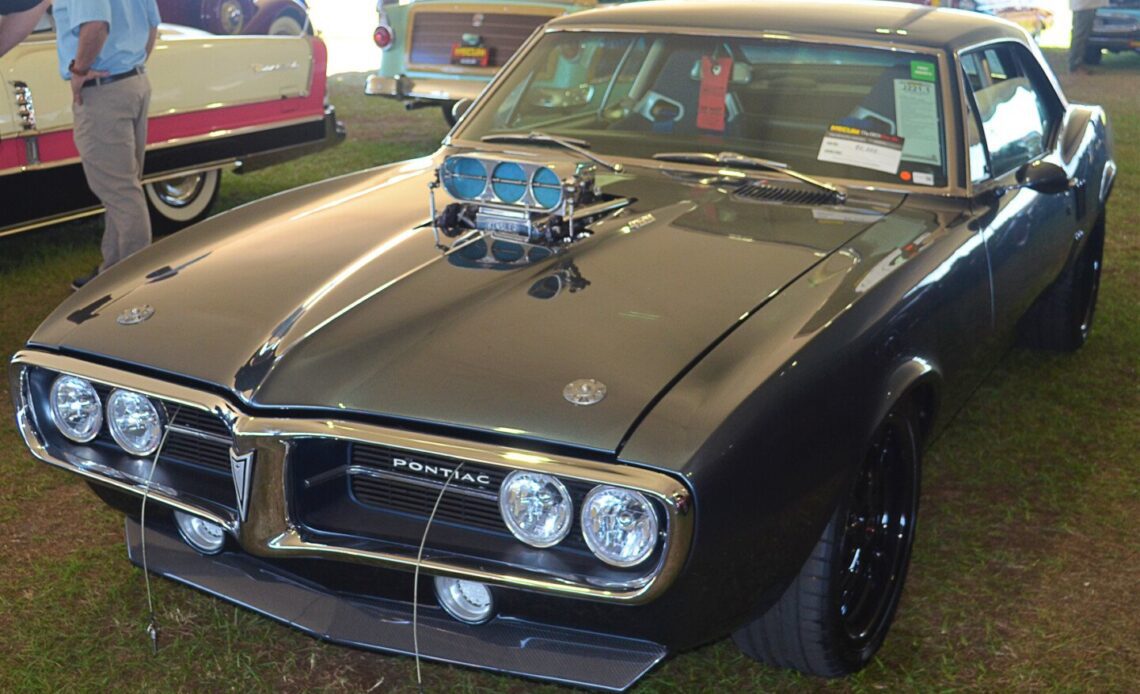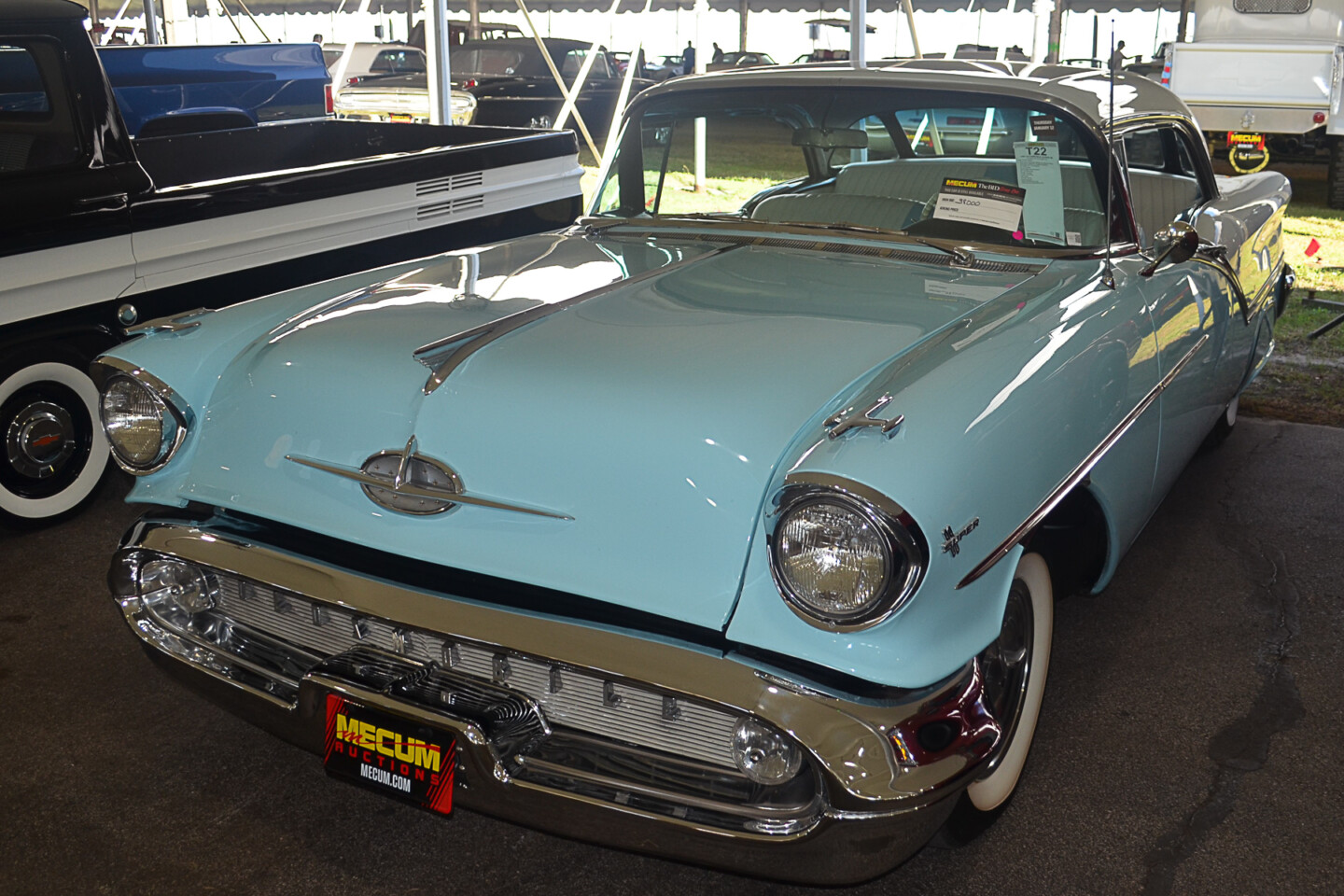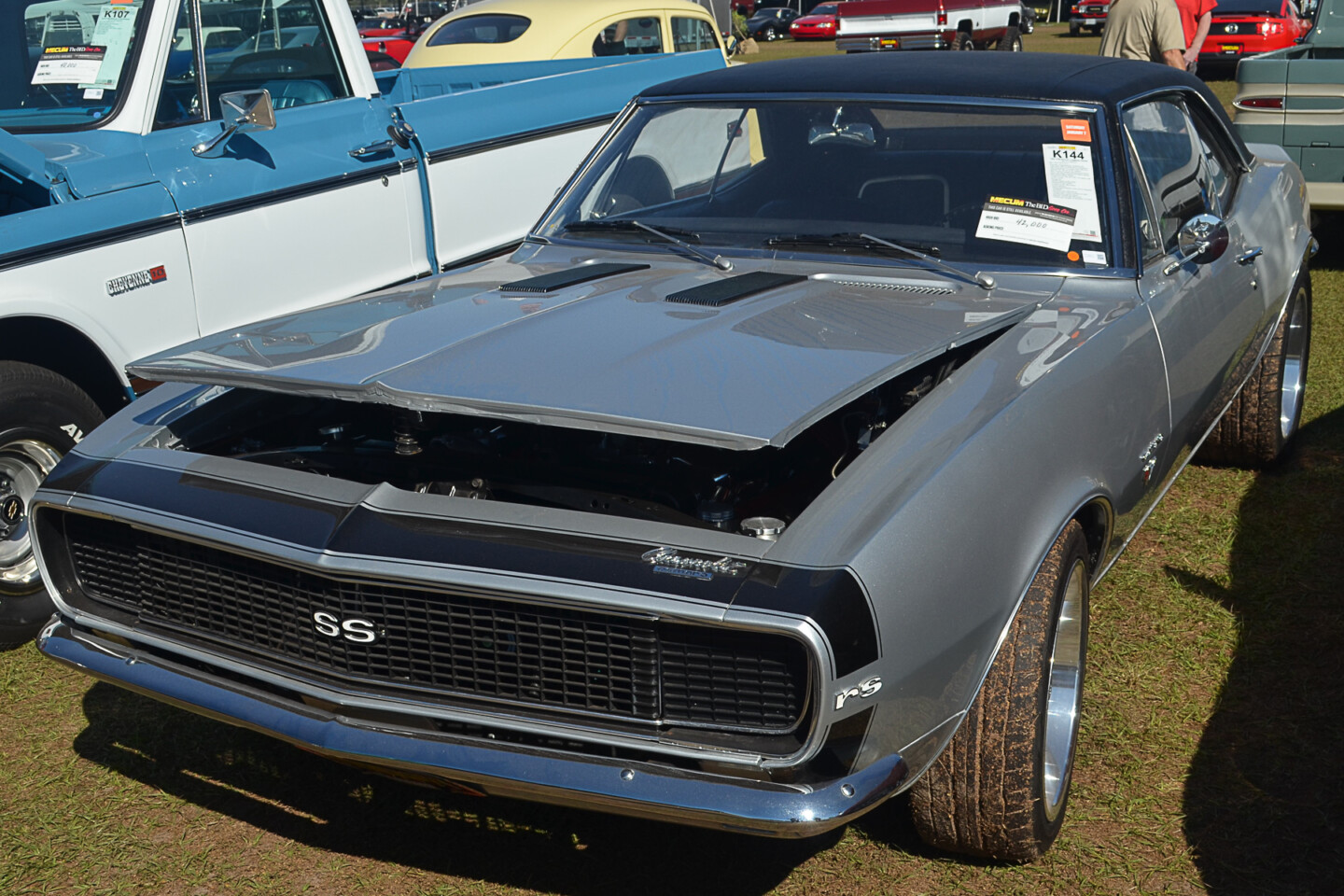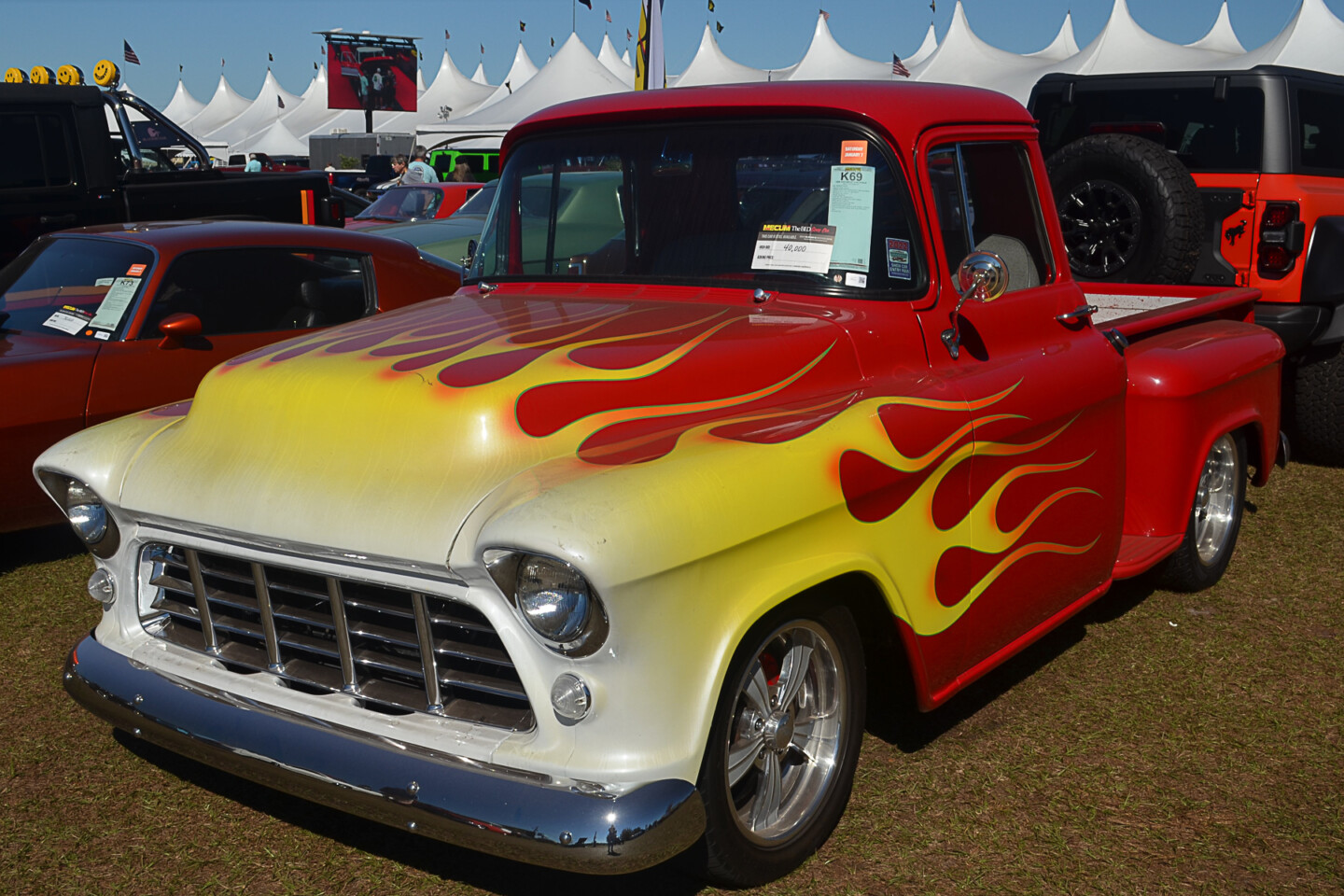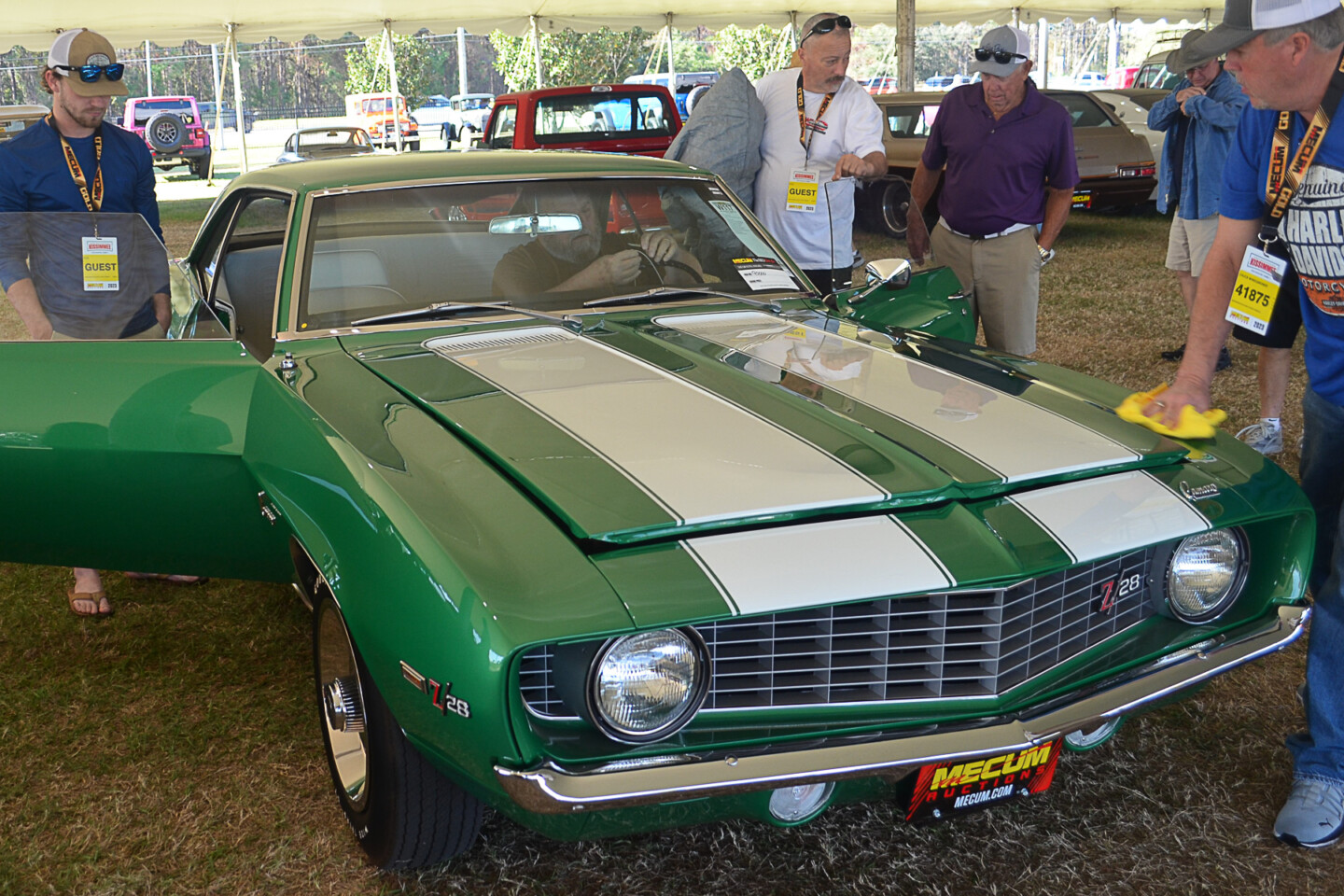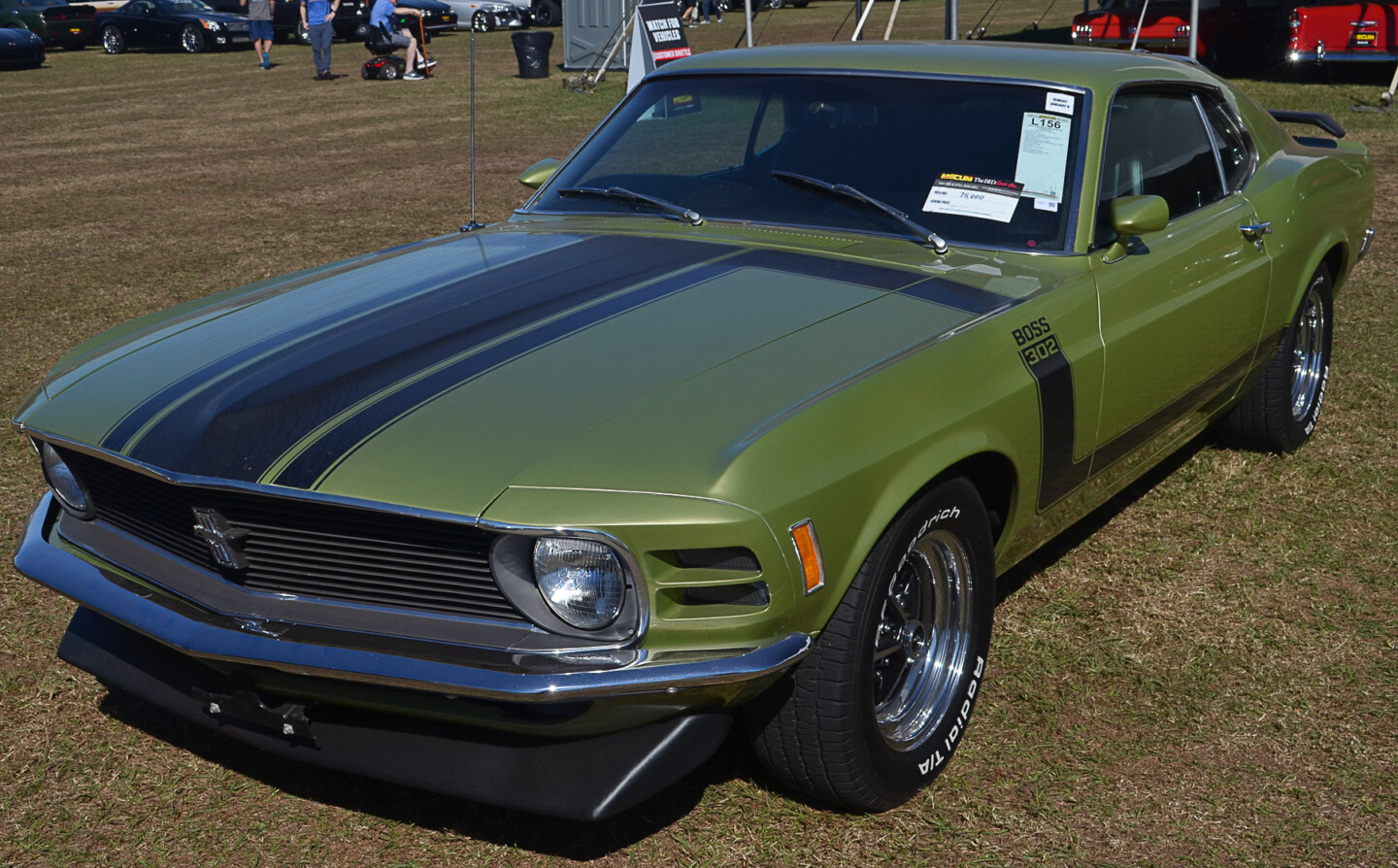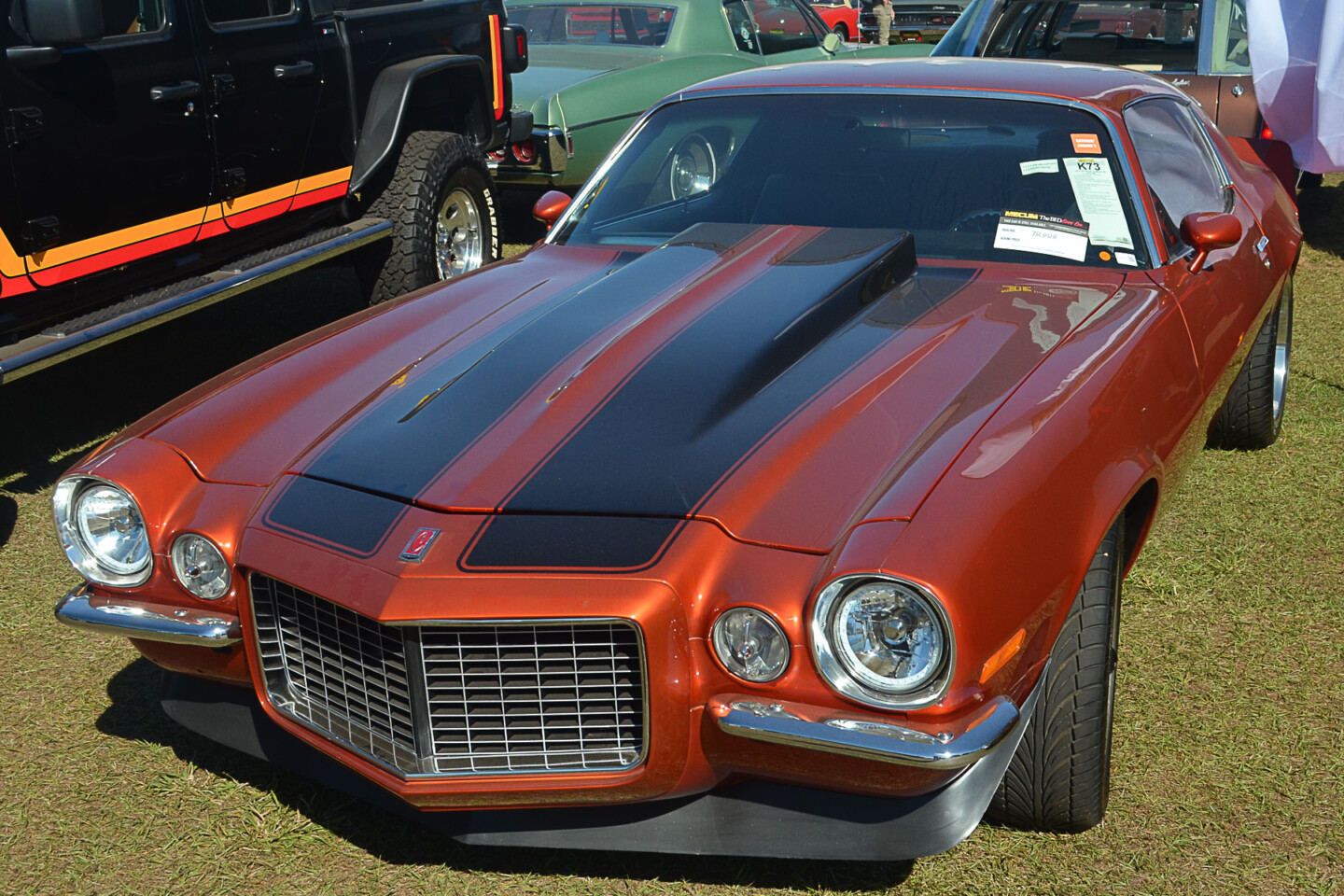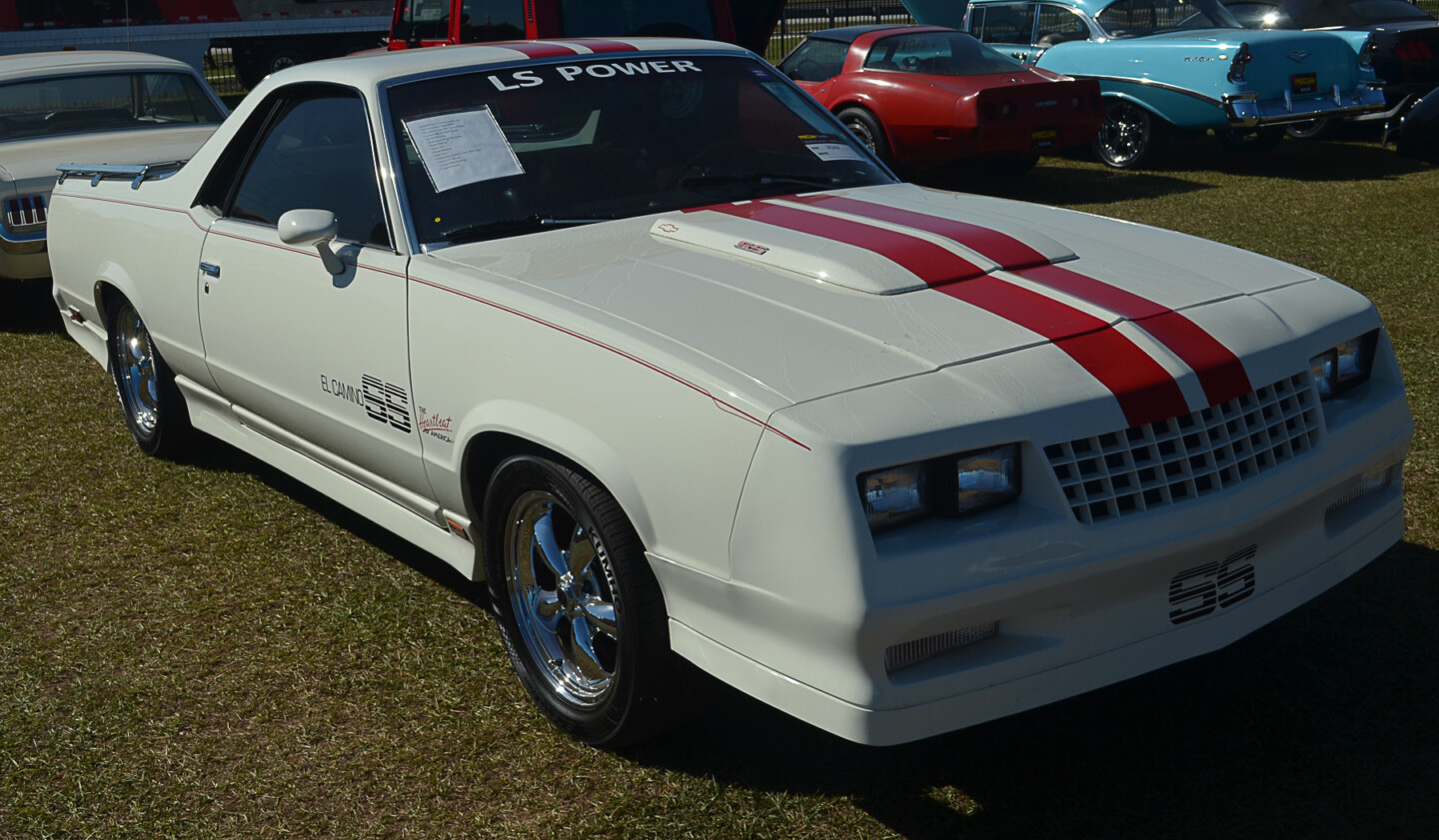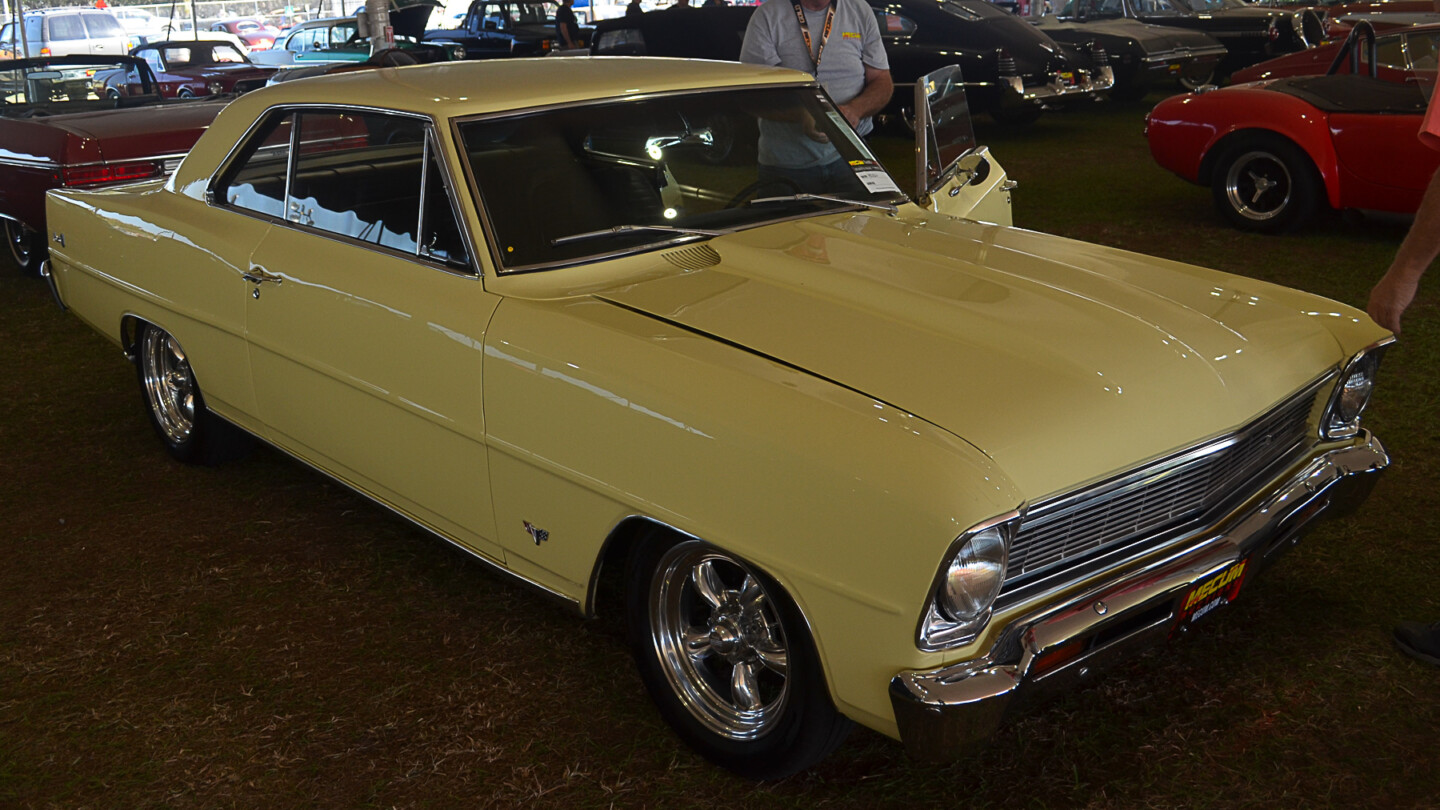The basics of collector car auctions are pretty well known. Reserve means the seller has set a minimum price; No Reserve means the vehicle will sell for the highest bid, regardless of the amount. But what happens if the reserve isn’t met varies by auction company.
Mecum, for example, moves an unsold car off the block with a “The Bid Goes On” label. But you might ask, what happens after that? At Mecum, those unsold vehicles are marked with a sticker that lists the highest bid and are then moved to a specific location on the auction grounds. In that area, a tent with Mecum representatives can put a potential buyer in touch with the owner.
If you wander that lot and see a car that interests you – say a Camaro that topped out at $35,000 – the Mecum rep can work with you to see if the owner might negotiate for a price between the high bid and the original reserve. If the high bid was $35,000, but the reserve is $50,000 you probably will walk away. But you might get the car for a few thousand more than the high bid.
In that case, the seller is happy, you have the car you want and, of course, Mecum still makes its commission.
What you don’t learn watching the auction on television, though, is the difference between the high bid and reserve. Mecum’s website and printed show programs don’t print the reserve, only if the vehicle is a No Reserve sale.
At the recent Mecum auction in Kissimmee, FL, (4,200-plus consigned vehicles) we spent some time in The Bid Goes On field checking out the no-sales. Here’s a look at 12 vehicles that didn’t meet the reserve, along with the high bids.
Click Here to Read the Full Original Article at DragzineDragzine…

